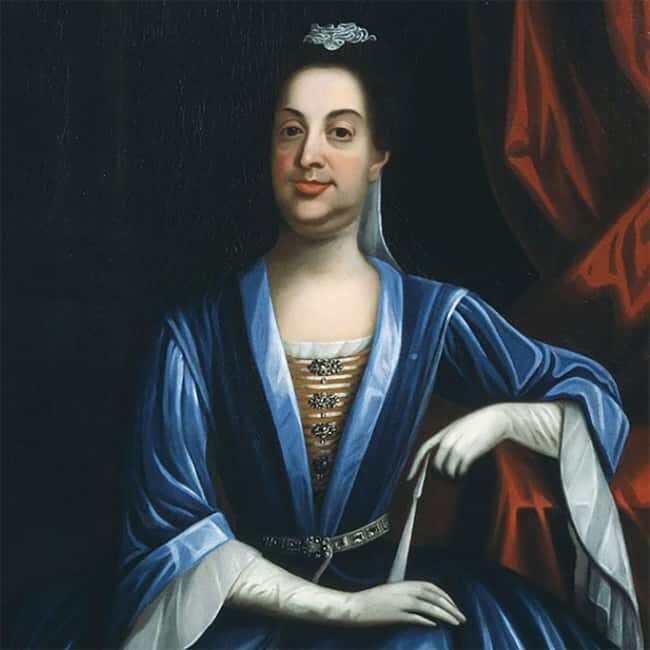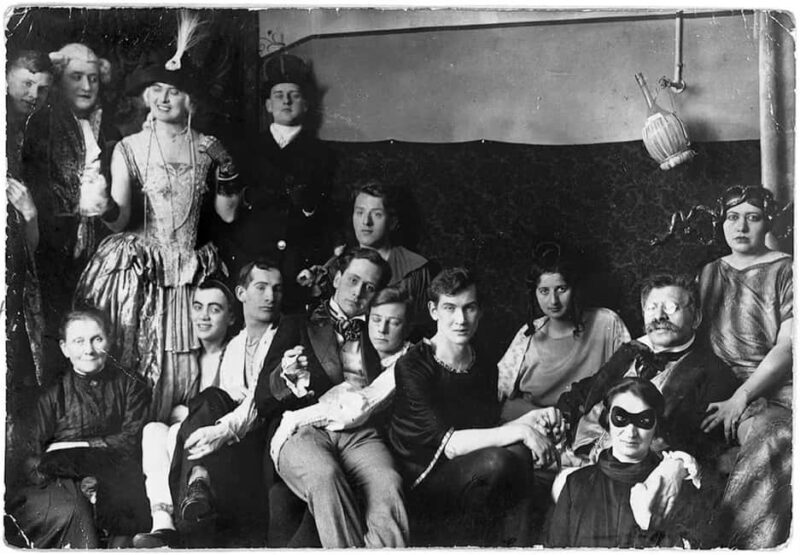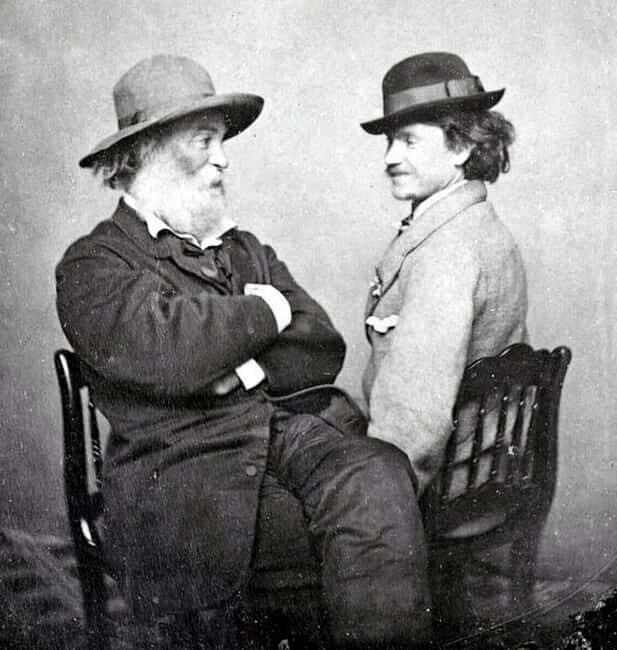Discovering the Hidden LGBTQ+ History of New York City

Imagine wandering through the streets of Greenwich Village with a knowledgeable guide, uncovering stories that shaped the city’s queer identity long before the Stonewall Riots. This tour, priced at $39 per person and lasting about 2 hours, offers a fascinating glimpse into NYC’s secret gay history. Led by an expert guide, you’ll visit iconic neighborhoods like NoHo and the East Village while hearing stories of queer artists, radicals, and pioneers whose lives often went unmentioned in mainstream histories.
What we truly appreciate about this experience is how it connects the dots between past and present, showing how the city’s LGBTQ+ community resisted oppression and thrived despite societal barriers. We also love that the tour touches on diverse figures, from Black transgender sex workers like Mary Jones to celebrated writers like Walt Whitman. However, the tour involves moderate walking and is not suited for children under 10, so it’s best for those comfortable on their feet and eager for authentic historical storytelling.
If you’re curious about how Greenwich Village became a bohemian hub and want to explore its lesser-known stories, this tour offers an engaging and educational experience. It’s well suited for history buffs, LGBTQ+ allies, and travelers looking to deepen their understanding of the city’s complex social fabric.
You can check availability for your dates here:Key Points

- In-depth storytelling: Learn about queer lives before Stonewall, from 19th-century figures to mid-20th-century activists.
- Authentic neighborhoods: Explore Greenwich Village, NoHo, and the East Village, each with its own queer history.
- Historical figures: Meet Mary Jones, Lord Cornbury, Murray Hall, and others who challenged norms.
- Activism highlights: Discover the 1966 Sip-In and how activists fought back against discrimination.
- Mob influence: Understand how organized crime profited from queer nightlife in the early days.
- Diverse stories: From lesbian bars to public parks, see how LGBTQ+ communities found spaces to connect.
Interested in history? Here are other past-focused experiences we've examined in New York City
An Authentic Walk Through NYC’s Hidden Queer Past
Few cities are as intertwined with LGBTQ+ history as New York. Yet, much of that history is tucked away, often overshadowed by more well-known landmarks. This tour offers a rare opportunity to explore the unsung stories of queer resilience and creativity in the city’s most historic neighborhoods.
What the Tour Covers
Starting on Bleeker Street and Broadway—a lively spot buzzing with activity—you’ll meet your guide, likely a passionate local historian who’s well-versed in NYC’s LGBTQ+ past. The tour unfolds as a walk, so comfortable shoes are a must. Expect to spend two hours strolling through streets where queer lives, loves, and struggles played out in the shadows and, eventually, in the open.
One of the most compelling stories is that of Mary Jones (Peter Sewally), a Black transgender sex worker from the 19th century, whose life challenges our assumptions about early queer figures. We loved the way the guide brought her story to life, making her feel like a real person rather than just a footnote.
Exploring Greenwich Village’s Radical Roots
Greenwich Village became a bohemian playground in the early 20th century, attracting queer artists, poets, and radicals seeking spaces free from societal judgment. The tour highlights how the neighborhood fostered a community where people could live openly—even if society often punished or marginalized them.
Stories of Lord Cornbury, the colonial governor rumored to have ruled in drag, and Murray Hall, a trans man who served as a respected politician, reveal a city that has long been a safe haven and a site of rebellion. These tales help us understand that LGBTQ+ life in NYC isn’t just a recent phenomenon but has deep roots.
More Great Tours NearbyThe Role of Nightlife and Crime
A particularly eye-opening part of the tour is learning how organized crime profited from queer nightlife in the early 20th century. This complicated relationship between criminal enterprises and queer communities illustrates how marginalized groups often relied on underground spaces for safety and connection.
The 1966 Sip-In at Julius is another highlight. This activist stunt by gay rights pioneers challenged the discriminatory policies of the time, showing how bravery and cleverness could push society toward change. The guide explained this pivotal moment with enthusiasm, making it clear why it’s considered a cornerstone of LGBTQ+ activism.
While in New York City, here are other experiences we've covered
Public Spaces as Queer Sanctuaries
Before dedicated LGBTQ+ venues became common, parks and public spaces served as vital spots for connection. The tour points out how these areas offered a refuge—but also how authorities policed or punished such gatherings. It’s a reminder of how fluid and resilient queer communities have historically been.
Beyond the Famous Figures
While Walt Whitman and Alexander Hamilton get mentions, what stands out are lesser-known pioneers like Murray Hall, who lived undetected for decades as a politician, and Eve Adams, a boundary-breaking figure in lesbian history. Learning about these quiet heroes adds richness to our understanding of NYC’s queer past.
Authentic, Balanced Stories
Throughout the tour, the guide emphasizes the complexity of history—acknowledging both the struggles and achievements of LGBTQ+ communities. Many reviews praise the knowledgeable guide and the engaging storytelling that makes these stories come alive.
Practical Details and Value

At $39, the tour is quite reasonable considering the depth of storytelling and access to hidden sites it offers. It’s a walking experience, so expect moderate physical activity, but the pace is manageable, with plenty of time for questions and reflection.
The tour operates rain or shine, so dressing appropriately and bringing comfortable shoes, water, and sunscreen is wise. Note that it’s not suitable for children under 10, as some stories and themes may be too mature for younger audiences.
Since hotel pickup isn’t included, you’ll need to meet at the designated spot on Bleeker and Broadway. It’s a lively corner, easy to find, and a perfect starting point for exploring the neighborhood afterward.
Accessibility and Booking
The tour is wheelchair accessible, a considerate touch for travelers with mobility needs. You can reserve with flexibility, paying later and canceling up to 24 hours in advance for a full refund, which adds peace of mind to planning your trip.
Who Will Love This Tour?
This experience is ideal for history enthusiasts, LGBTQ+ travelers, and anyone curious about NYC’s deeper stories. If you enjoy walking tours that blend culture with activism, you’ll find it well worth the time and money. It’s particularly good if you want to understand the roots of the city’s queer identity beyond the well-trodden landmarks.
Final Thoughts
This tour offers a thoughtful and lively journey through NYC’s often overlooked LGBTQ+ past. It’s a wonderful way to see Greenwich Village through a different lens—one that celebrates resilience, creativity, and activism. The stories shared are both inspiring and educational, making it a meaningful addition to any trip to New York.
While it doesn’t cover the entire history of LGBTQ+ life in the city, it illuminates key moments and figures, giving you a sense of the ongoing struggle and celebration that characterizes NYC’s queer community. If you’re looking for an authentic, engaging, and affordable experience that connects history with the present, this tour is a smart choice.
FAQ
Does the tour involve a lot of walking?
Yes, it’s a walking tour that lasts about 2 hours, covering neighborhoods like Greenwich Village, NoHo, and East Village. Comfortable shoes are recommended.
Is the tour suitable for children?
No, it’s not suitable for children under 10 due to some mature themes and stories.
Is the tour accessible for wheelchair users?
Yes, the tour is wheelchair accessible, making it welcoming for travelers with mobility needs.
What should I bring?
Comfortable shoes, a camera, sunscreen, and water are advisable since it’s an outdoor walking experience.
What is the meeting point?
The tour begins on the corner of Bleeker Street and Broadway, in front of the Van Leeuwen Ice Cream Store.
Can I cancel if my plans change?
Yes, you can cancel up to 24 hours in advance for a full refund, adding flexibility to your trip planning.
Does the price include any extras?
No, the price covers the guided tour and access to historic sites. Food, drinks, and personal expenses are not included.
How long is the tour?
It lasts approximately 2 hours, making it a manageable addition to your day.
Are there any hidden costs?
Not typically; the fee is straightforward, but remember that food or souvenirs are extras if you choose.
Is this tour good for solo travelers?
Absolutely—many groups are small enough to be friendly, and guides create an inclusive environment for all participants.
This walking tour offers an eye-opening, heartfelt look at how New York City became a beacon for LGBTQ+ life long before Stonewall. It’s a journey worth taking if you want to understand the city’s complex social fabric and celebrate the pioneers who paved the way for future generations.
You can check availability for your dates here:More LGBTQ-Friendly in New York City
More Historical Tours in New York City
- American Museum of Natural History Admission Ticket
- TriBeCa Architecture & History Walking Tour
- Slavery and African American History Private Tour in NYC
- Soul of Harlem History and Heritage Walking Tour
- WWII and American War History Private Tour in New York City
- Pride Tours NYC’s LGBTQ Historical Walking Tour
More Tour Reviews in New York City
More New York City experiences we've covered
- 16 Best Lunch Experiences In New York City (With Reviews & Prices)
- 16 Best Food Tours In New York City
- You’ll Love These 16 Dinner Experiences In New York City
- 16 Fantastic Dining Experiences In New York City
- 3 Most Highly Rated Coffee Tours In New York City
- 5 Best Brewery Tours In New York City
- New York City’s 16 Best Workshops & Classes: Which To Choose?
- The 16 Top Wine Tours In New York City: Which Is Best?
- 16 Best Walking Tours In New York City
- Discover 5 Great Spa & Hot Springs Experiences In New York City
- The 16 Most Popular Shopping & Market Tours In New York City
- We Rank New York City’s 16 Top Sailing Experiences
